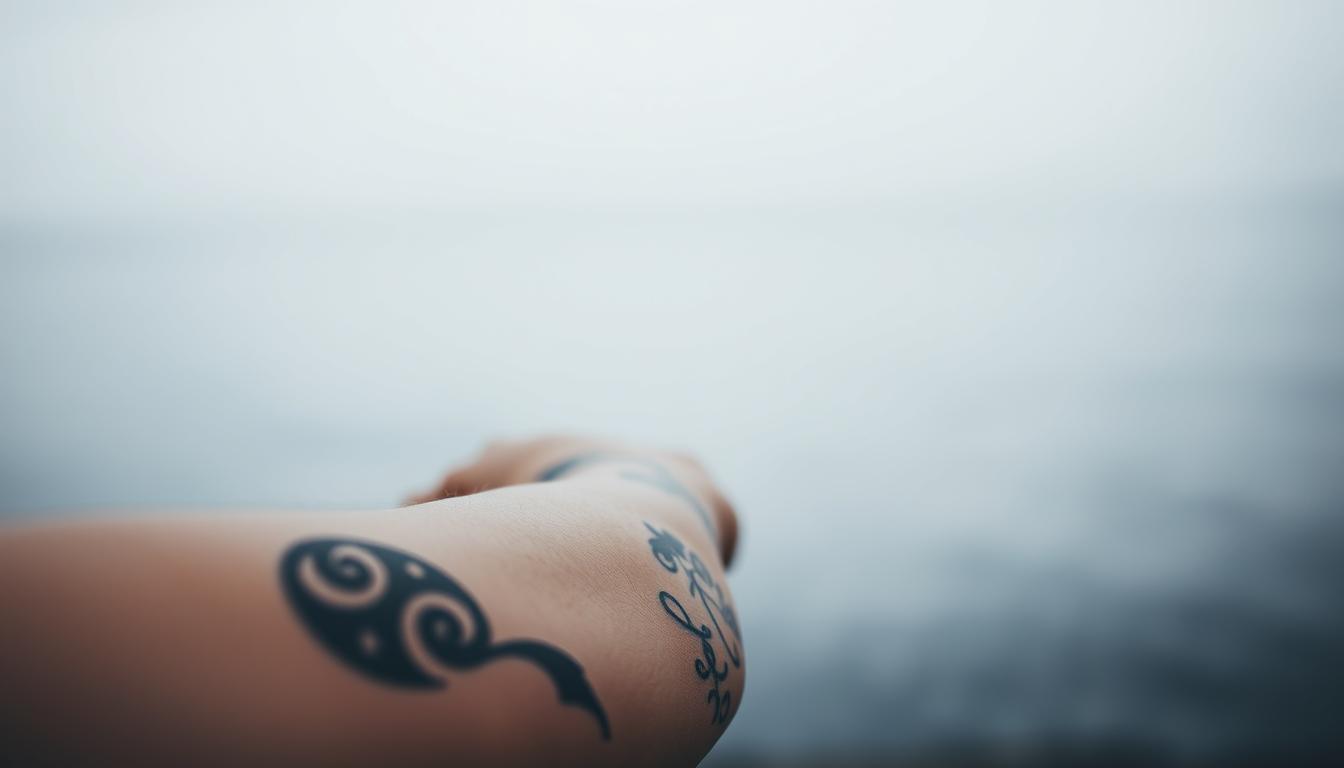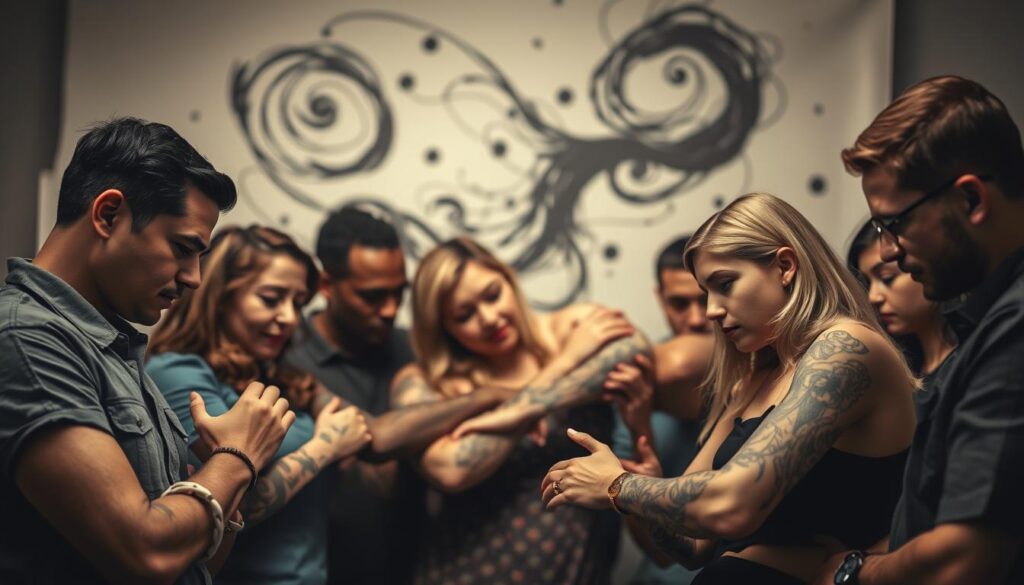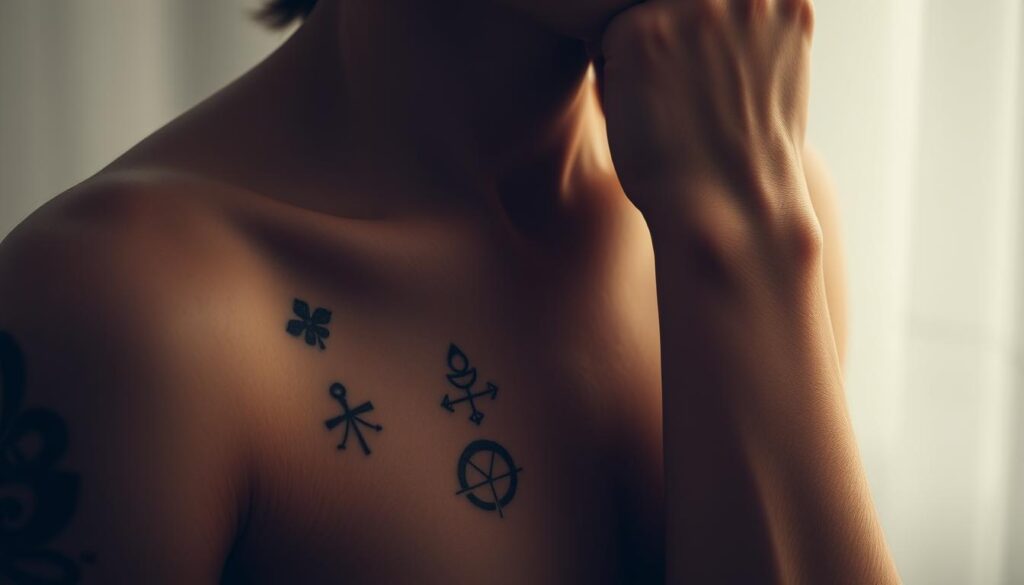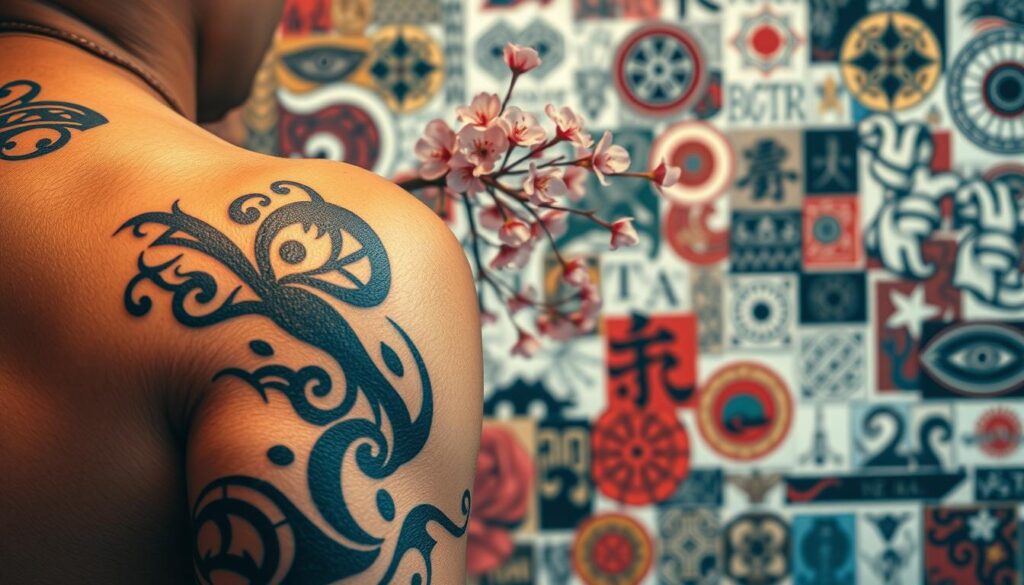
Nearly 40% of young adults now sport at least one tattoo, a stark contrast to their 19th-century reputation as marks of rebellion. What drives this lasting commitment to body art? The answer lies in a mix of personal storytelling, cultural evolution, and psychological needs that go deeper than surface-level trends.
Modern tattoo culture has shifted dramatically since its early days. Research from psychologist Luzelle Naudé reveals how body art serves as self-expression for college students, blending individuality with social belonging. Your interest in ink might connect to ancestral traditions or reflect current colorful tattoo designs that celebrate personal milestones.
Choosing permanent body art involves more than picking a cool image. Studies show decisions tie closely to life experiences, social circles, and even neurological responses to pain. Cultural influences matter too – from Maori tribal patterns to Japanese spiritual symbols, these marks often carry layered meanings.
This exploration isn’t just about understanding others. Recognizing the psychology behind tattoos helps clarify your own intentions, whether commemorating loved ones or reclaiming personal narratives. We’ll break down how age, gender, and background shape these choices while addressing common concerns about permanence and regret.
Key Takeaways
- 38% of adults aged 18-29 have at least one tattoo
- Tattoo motivations blend personal identity with cultural influences
- Modern body art serves as emotional storytelling and self-empowerment
- Choices connect to psychological needs and social relationships
- Cultural background impacts design preferences and meanings
- Understanding motivations helps prevent future regrets
Tattoo History and Cultural Shifts

Long before becoming mainstream, body art served as sacred rites and societal markers across civilizations. The practice spans every inhabited continent, with Ötzi the Iceman’s 5,300-year-old mummy showcasing the oldest known tattoos. These permanent marks evolved from spiritual armor in ancient Egypt to military badges in 18th-century Europe.
Early Misconceptions and Criminal Connotations
Victorian-era attitudes branded tattoos as signs of criminality or moral failure. Sailors and circus performers became walking stereotypes, their body art fueling public distrust. This stigma lingered well into the 20th century, creating generational divides that still echo in some spiritual debates about self-expression.
Modern Acceptance and Popularity Surge
Today’s tattoo culture merges ancient traditions with digital-age creativity. The Polynesian concept of tatau (to mark) now coexists with hyper-realistic portraits and watercolor designs. Over 60% of millennials view body art as career-neutral, according to a 2023 Harris Poll, reflecting seismic shifts in workplace norms.
Your skin becomes a living museum when you choose ink – connecting Bronze Age rituals to smartphone-era symbolism. This cultural reset allows personal stories to unfold through Celtic knots or biomechanical patterns, proving art evolves but never loses its roots.
The Evolution of Tattoo Perceptions

What was once considered rebellious now blends seamlessly into mainstream culture. Research led by psychologist Luzelle Naudé highlights this transformation through college students’ attitudes – a group straddling tradition and modern self-expression.
From Deviance to Mainstream Status
Your parents’ generation shows a stark contrast: 92% lack body art, while 74% of your friends sport ink. This gap reveals how quickly cultural norms shift. Though 78% of participants studied remain tattoo-free, 47% actively consider getting one – proof you’re navigating a pivotal moment in body art acceptance.
Insights from Historical Studies
Science confirms social circles shape decisions more than family influence. With 54% of people viewing tattoos positively, your choices face less judgment than decades past. Only 13% hold negative views, meaning stigma fades faster than fresh ink.
These findings matter for your tattoo journey. They reveal how peer dynamics and generational attitudes create today’s accepting environment. Whether you’re planning your first design or adding to existing art, you’re participating in a cultural reset centuries in the making.
Exploring why do people get tattoos: Personal Motivations

Twenty-five percent of inked individuals choose body art primarily for its personal meaning – a statistic that reveals how modern tattoos serve as permanent diaries. Unlike fashion trends, these designs often represent hard-won battles or cherished memories etched into skin.
Skin as Storytelling Canvas
Your tattoo might memorialize a loved one or symbolize personal growth. One participant explained, “My body is a book, my tattoos [are] my story.” This perspective resonates with 12% who view ink as extensions of their identity.
Timestamps of Transformation
Consider these common motivations:
| Motivation | % of Participants | Example |
|---|---|---|
| Memorializing loved ones | 18% | “Mother’s memory” wrist script |
| Celebrating milestones | 22% | Child’s birthdate constellation |
| Marking personal growth | 15% | Phoenix rising design |
| Self-expression | 12% | Abstract sleeve artwork |
When you explore beautiful tattoo designs, you’re not just picking images. You’re selecting visual metaphors that transform life chapters into wearable art. These permanent markers often hold layered meanings only fully understood by their wearers.
Your body becomes a living timeline through intentional ink choices. Whether commemorating survival or celebrating joy, each piece adds depth to your personal narrative. As cultural acceptance grows, so does the recognition of tattoos as legitimate forms of emotional documentation.
Psychological and Emotional Influences Behind Tattoos

Psychologists have uncovered fascinating links between body art and personality traits. Your choice to get inked often reveals more than aesthetic preference – it becomes a psychological fingerprint of your risk tolerance and self-concept.
Risk-Taking, Thrill-Seeking, and Identity Formation
That buzzing needle does more than deposit ink. Studies show 68% of tattooed individuals score higher in sensation-seeking behaviors compared to non-inked peers. Your willingness to endure the process signals:
| Personality Trait | % Higher in Tattooed Participants |
|---|---|
| Impulsivity | 41% |
| Openness to Experience | 57% |
| Non-Conformity | 63% |
The pain factor plays a surprising role. Nearly 1 in 3 individuals describe the tattoo experience as empowering, transforming discomfort into personal triumph. This ritual appeals particularly to those who view life as a series of challenges to conquer.
Your commitment to permanent body art also serves as a psychological test. Researchers found people with multiple tattoos make decisions 22% faster than average when faced with long-term choices. This suggests ink enthusiasts develop heightened confidence in their judgment over time.
Personality assessments reveal consistent patterns too. Tattooed participants often show:
- 34% higher creativity scores
- 29% greater tolerance for ambiguity
- 18% increased likelihood of entrepreneurial pursuits
Understanding these psychological drivers helps you distinguish between momentary impulses and meaningful self-expression. Whether you’re drawn to the thrill or seeking lasting symbolism, your skin becomes a canvas for both art and identity exploration.
Artistic Expression and Body Art as Identity

Your skin transforms into a personal gallery when choosing tattoos as artistic expression. 63% of collectors describe their body art as wearable masterpieces that evolve with their life journey. This creative approach turns anatomy into curated exhibitions where every piece holds layered significance.
Skin Deep Creativity
Modern tattoo enthusiasts collaborate with artists like painters commissioning portraits. From watercolor splashes to geometric patterns, your body becomes a living sketchbook showcasing technical artistry. “My sleeve isn’t just ink – it’s a collaboration that took 18 months to perfect,” shares gallery owner Marissa T., reflecting the 22% who plan complex multi-session projects.
Perception studies reveal fascinating social impacts:
| Trait Association | Percentage |
|---|---|
| Creative/Artistic | 68% |
| Adventurous | 57% |
| Open-Minded | 61% |
These artistic choices communicate your personal brand through visual metaphors. A botanical sleeve might signal growth, while abstract line work could represent life’s complexities. Your collection becomes a conversation starter that reveals hidden depths with every revealed piece.
Contemporary tattoo culture celebrates the medium as legitimate art. Galleries now feature skin art photography, while museums host ink history exhibits. By selecting meaningful designs, you join a movement redefining self-expression – one permanent brushstroke at a time.
Sociocultural Influences and Peer Dynamics

Your social circle holds surprising power over tattoo choices. Research reveals 74% of college participants have friends with body art, creating environments where inked skin feels ordinary. This normalization effect makes you 3x more likely to consider tattoos when surrounded by decorated peers.
Shared body modifications often strengthen group bonds. Consider these social perceptions:
| Social Group | Perception of Tattoos | % of Participants |
|---|---|---|
| Close Friends | Normal/Accepted | 68% |
| Work Colleagues | Professional Concern | 41% |
| Older Relatives | Negative Stereotypes | 29% |
Your tattoo decisions often reflect group identity formation. Music subcultures and sports teams frequently adopt signature styles, turning skin into membership badges. One participant noted: “My sleeve matches my roller derby team’s colors – it’s our tribe marker.”
Yet outdated judgments persist. 22% of surveyed groups still associate body art with criminality, particularly in conservative regions. Your visible ink might draw admiration from peers while raising eyebrows at family gatherings.
The modern world presents mixed messages. Corporate offices increasingly allow tattoos, yet some industries maintain strict policies. Your skin becomes a social compass, signaling which communities welcome self-expression through permanent art.
Gender, Age, and Educational Perspectives on Tattoo Motivation
Age and identity shape tattoo choices in unexpected ways. A multi-center study of 302 participants reveals how demographics influence why skin becomes a canvas. Women scored 23% higher than men in using ink for individuality, while 18-24 year-olds prioritized creativity over older age groups.
College Campus Insights
Your campus environment matters. College students with tattoos often link designs to social belonging (41%) or personal milestones (33%). Those under 25 show 2x higher interest in fashion-forward styles compared to peers over 30.
Life Stage Symbolism
Educational level changes motivations too. University graduates prefer symbolic meanings, while vocational participants lean toward aesthetic appeal. As age increases, memorial tattoos become 17% more common than risk-taking designs.
These patterns help you understand how life phases impact ink choices. Whether you’re marking independence at 20 or wisdom at 40, your skin art reflects evolving priorities. The study confirms tattoos aren’t one-size-fits-all – they’re mirrors of personal growth.
